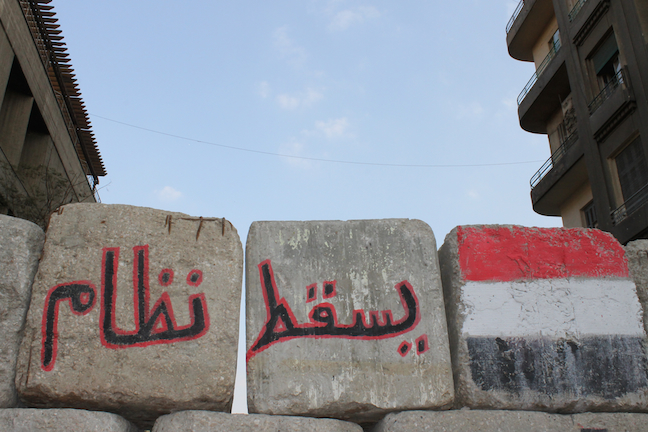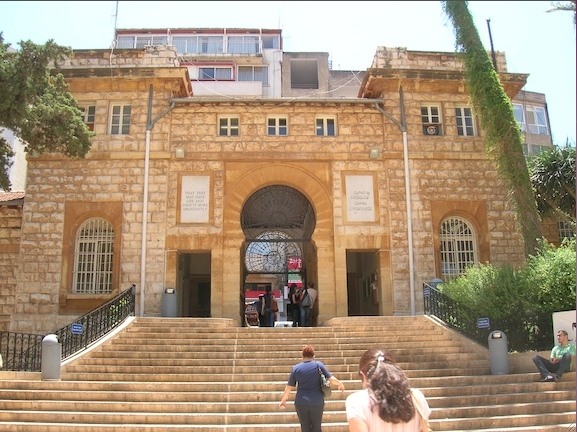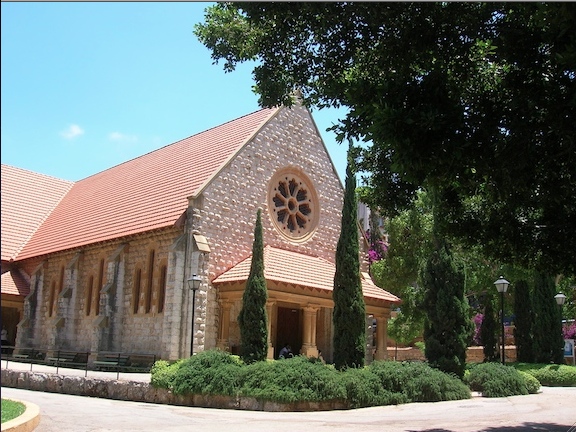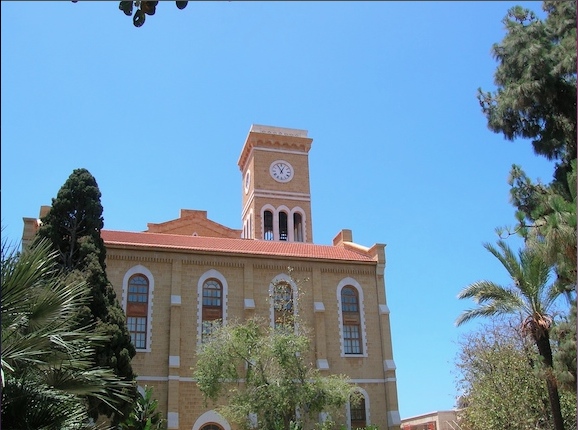“Narrating the Arab Spring,” Cairo University, 18-20 February 2012
Many of us have spoken and thought about those who we wished would have been present to witness—and perhaps participate in—the revolutions. People we have known and loved, and people we have known from a distance. A woman stands up in a plenary at the “Narrating the Arab Spring” conference simply to say she would have loved it if Edward Said were here; she would have loved to hear and read what he had to say “about what is his revolution also.” It is a moving moment; the room breaks into applause.
Organized by the English Department at Cairo University, in collaboration with the Center for the Advanced Study of the Arab World and The Women and Memory Forum, “Narrating the Arab Spring” took place over three days, 18-20 February, at Cairo University. Several threads wove through the tens of papers given over a number of parallel sessions, covering a range of issues and questions—some analytical, others more of a descriptive and documentary bent. Here I bring together a few threads that I think are particularly pertinent.
I. The Permission to Narrate: Who Speaks?
The reference to Edward Said spoke to some of the questions that hover around narrating the revolution. Because Edward Said is not here, does it make the revolution any less “his”? The contributions, the “before” of the revolution, are perhaps not a simple before, but rather a part of. And those who are no longer with us and can no longer narrate: who narrates their stories? Who speaks in the name of the martyrs who cannot narrate for themselves? Is speaking in the name of the martyrs a real possibility, or a kind of violence?
Even the mention of Edward Said evokes narrative through his seminal essay “The Permission to Narrate.” Writer Jean Makdisi spoke at the conference about the possibility of stealing narratives, positioning herself as both inside and outside as she posed the question of whether only those who participated in the revolution can narrate, of whether someone else can add something.
Certain narratives, such as the narrative that credits writer on non-violence Gene Sharp with the strategy leading to the toppling of Mubarak, and that which credits social media with being a major force, were also seen as a kind of stealing of revolution. With regard to social media, most participants, while critical of the Twitter/Facebook revolution hype, also refused the opposite position of denying that social media had any role to play.

[Photo by Naira Antoun.]
The post-Mubarak scene in Egypt is in part characterized by a plethora of voices speaking in the name of the revolution. The sight of regime figures evoking the revolution, or those who sycophantically apologized for the regime now acting equally sycophantic in their evocation of the revolution, is nauseating, and many have said so. It is not simply stealing narrative, but stealing revolution.
But in the cacophony of voices, what about the voices we do not hear? Few addressed this question. Those who are seen to represent the revolution, diverse as they may be ideologically, do not reflect the full diversity of those who participated and continue to participate. This is unsurprising, and perhaps inevitable given the differential access not simply to speaking but to being heard in an unequal society. But if we espouse the goals of the revolution, we must do more than note the stealing of narrative and revolution; we must do more than note that there are voices we do not hear.
And then there is the question of how voices are heard and narrated by others. There are several stories that make the rounds on social media, not only from the eighteen days but from the bloodshed since. These are stories about people who are often anonymous. There is the case of the young man who put on his best clothes knowing he would be going to the front lines, in case by the end of the day he would be a martyr. There is the story from the five days of fighting around Mohamed Mahmoud Street in November of a young man saying to a woman that she should stay back: he would die, and she, educated and cultured, would help rebuild the country. This story made the rounds as one of those that points to the determination and willingness to give up anything, even life, in the struggle for freedom. Novelist Radwa Ashour related it in her opening talk at the conference.
But there is something deeply unsettling about this. It is not the story that disturbs and unsettles so much as its narration. It is not about denying agency to the young man who was willing to be a martyr if necessary, who may now indeed be a martyr; this is his right. There is a gender aspect in the story also. But what is most unsettling is its repeated narration by middle-class activists in a way that soothes and allays our worries. The narration implicitly suggests that a class division of labor in the revolution is okay; “they” can die, “we” will rebuild. The sha`bi young can offer simply their bodies, while the educated youth will rebuild and recreate, standing on that sacrifice. This is a narration that suggests that however loudly we call for social justice, some of those who call for it may not have fully internalized its meaning.
II. The Flags of the Arab World
The main picture accompanying the conference was of masses of people, presumably in Tahrir Square. The picture the organizers chose for the cover of the program, however, was different; in it were masses of people at a demonstration holding several Arab flags stitched together. The reference to “Arab” in the conference title, and the pan-Arab gesture of the photo, points to a desire for analysis and thinking that draws connections between the revolutions, uprisings, repression, and resistance that are occurring in several Arab countries.
While there was a smattering of papers on the Maghreb and Iraq, one on the Gulf, one on Syria, and some references to Palestine, the conference was heavily Egypt-centric. Perhaps this is no surprise; after all, one of the conference organizers was a Cairo University department, and the conference itself was in Cairo. Perhaps too if there had been the possibility of contributions in French, there would have been more on Tunisia and Morocco. As it was, the potential for drawing connections across and between Arab countries was lost.
Among the papers on Egypt, even some of the key questions relating to Egypt’s revolution remained unexplored; meanwhile, there were several papers on social media and the power of the image. There is a narrative of the revolution as a revolution for freedom. But what does this mean? Would a continuation of the same neoliberal policies and reforms fulfill a demand for freedom? Where would social justice fit into this? And what about the fact that slogans criticizing the US and Israel were chanted at demonstrations from January of last year until today—would a continuation of the same relationship with the United States and Israel constitute freedom? What about an analysis of the power relations “behind the scenes”: models of restructuring the police, the interior ministry, and security forces, given that a majority of the poor do not live free from police brutality?

[Photo by Naira Antoun.]
The title of the conference invited us to narrate or explore the narrating of the “Arab Spring.” Many, however, were unhappy with such a term. When Radwa Ashour was asked about it, she said it was just a label—arguably an odd attitude for a writer, a crafter of words, to take towards language. Some were happy to simply note their uneasiness with the term and move on. Others wanted to explain their discomfort. How could what is happening in Syria and Libya be described as spring, Jean Makdisi asked. Several pointed to the intimations of what came before the spring: the slumber of winter, a passivity out of which the revolutions sprung sui generis. In the “Arab” part of the equation “Arab Spring,” several participants made passing reference to Arab consciousness, raising the prospect of a kind of Arab nationalism from below. But given that an upsurge of dissent is not limited to (some of) the Arab world, what global connections are cut off by the “Arab” of the “Arab Spring”? What about the links with an international economic crisis?
III. A Cairo University Desk
In a Cairo University lecture hall that hosted several of the conference panels, distracted students had doodled and scribbled on the desk during their lectures. There is a drawing of a flower, a declaration of love, some random words. There is the “UA07” of the Ahly Ultras, “January 25th,” and “down with military rule.”
It is a reminder. Of many things. The doodlings that might be seen in any lecture hall alongside the politicized declarations remind me of Mona Abaza`s contribution to the conference: she spoke about a separated zone of battle that becomes a normalcy, while others go to work, constituting two moments at the same time, and of how normalized rupture and the spectacular become, so that they can be made invisible to some. It is a reminder of the fact that we are in the midst of a revolution—for example, at Cairo University, where the struggle also takes place, where many students are active participants in that revolution, a few of whom have lost their lives. A number of the speakers who came from abroad for the conference were visibly moved to be here, honored.
It is a reminder that we are in the midst of it all. And in the midst of it all—at a conference—what is the place for theory? The question is asked explicitly and implicitly again and again. A sense that urgency somehow stands opposed to the luxury of theory. But is theory luxury or necessity? What kind of theory? What kind of intellectual? An engaged intellectual? What is engaged? Is it enough to simply produce progressive and committed writings published in journals and books that are out of reach for most?
These are questions that are asked in all kinds of times and places, but questions that in this time and space have a particular resonance, or urgency, we could say. Participants in the conference struggled and writhed with these questions. Some felt almost guilty about theory. For Zeinab Aboul Magd at the American University of Cairo, the solution has for the past few months been to “give up on theory.” She recognizes that theory is internalized, that it is not possible to give theory up per se, but feels that what she can offer revolutionaries is information, research, and informed analysis, not theorizing. It appears to be those working and researching and writing in Cairo who are most troubled by the relationship between their theorizing and participating in the struggle; those in physical proximity to it are most likely to question the relevance of theory.
While the question of the place of theory was raised a number of times, there was surprisingly little theory. A participant asked Radwa Ashour after her keynote address about whether we need distance to be able theorize and analyze: is it because we are too close that it is hard, she asked. Ashour`s answer pointed not to the physical distance necessary, but the temporal distance. Indeed, several of the contributions, while interesting, often did not move beyond a level of description. Those most explicitly theoretical did not offer new and potentially fruitful avenues of theory to help us understand the current moment, and arguably to contribute to taking it forward. For instance, there was a paper about the media treatment of journalists Lara Logan and Mona El-Tahawy in the wake of the sexual violence they experienced, a paper that very much relied on the body of theory that has made sense of “Western” constructions of “honor killings” and other violence towards women. This is a body of theory that often invokes Gayatri Chakravorty Spivak`s “white men saving brown women from brown men.” While this is certainly interesting, it seems that the current moment calls for a different kind of theorizing. This might be the sort of theory that may in a sense be a luxury, but that in the current moment of urgency is all the more a necessity.
IV. Knowledge, Narrative, Pedagogy
The way that the urgency of theory is subsumed by other, perhaps more pressing urgencies is reflected in the process of archiving the revolution. Historian Khaled Fahmy accepted an invitation from the National Archives to take on the role of archiving the January 25th revolution. The challenges are myriad. A project based on voluntarism, it harnesses people`s enthusiasm and is itself, for those involved, a part of the revolution. But being participants in that very revolution, there are pressing urgencies. Fahmy described the rushing after friends, doing the rounds of hospitals, police stations, and morgues. Those involved are exhausted, physically and emotionally, as most revolutionaries today in Egypt indeed are.

[Photo by Naira Antoun.]
A state body has subcontracted the archiving to a group of revolutionaries, who are themselves opposed to the modus operandi of that very state body. As Fahmy has pointed out in a number of interviews on the archiving of the revolution, this project stands in contrast to the committee that documented the 1952 Revolution, which was headed by Hosni Mubarak. The archiving project stands apart from the state archives, then, not only in its content, but also in its methodology and its very notion of what an archive is and who it must serve. Simply put, the archive must be for the people. While this may sound like a slogan, it is a profound difference and represents a journey fraught with challenges.
The idea of this archiving of the revolution is not to present a narrative or to tell a history, but to make material available for multiple tellings and multiple narratives. Logistical challenges include the question of how to preserve the material digitally in perpetuity, knowing that the current digital technology will be obsolete before long. These logistical challenges meet conceptual challenges: How to catalogue the hoards of material in a way that does not in itself constitute an act of narrativization? Is that possible? Then there is the conceptual challenge of documenting a revolution that is ongoing. There are those who seek to limit the revolution in time, to eighteen days of 2011. So does the period of documenting have a start and end date, even if the revolution itself may not?
And there are also the challenges of doing something with the state that is opposed to the state. In a project that is associated with the national archives, and thus with the state, there is the question of how to archive a revolution that opposed that very state (for the revolution was of course not only aimed at Hosni Mubarak as an individual). Will people trust the project? Would people share documents or artifacts that implicate themselves or their friends? Securing legal guarantees in such a context is no simple task.
The state acts as an owner of the archives, not a custodian. Few are allowed to cross the threshold to these poorly preserved materials, and the criteria for those who are allowed to do so revolve around security. The archiving of the revolution is itself a part of the revolution against the hegemony of a security mindset—not simply in the case of archives, but in its attitude to knowledge. The ideas motivating the project are that knowledge is not dead material to be memorized; that knowledge is for all; and that it is to be used to produce and generate and create, a subject addressed by Fahmy in a recent opinion piece raging against the fear of knowledge in libraries, museums, and supposed places of learning.
Fahmy`s paper tied together beautifully, through the threads of pedagogy, with Judith Barsalou reflections on history teaching. In April 2011, the education ministry issued a decision to remove positive references to Hosni Mubarak, his entourage, and the now-defunct National Democratic Party from history textbooks. Barsalou drew upon experiences of teaching history in a number of post-conflict situations. If the pressures on teachers in general are colossal—Iman Farag has written about this in the case of Egypt—the pressures on history teachers in countries coming out of conflict is particularly acute. Teachers of history are looked upon to be agents of change while simultaneously upholding socio-political norms. The classroom is central in the transmission of narratives, but is often amongst the slowest institutions to reform. Indeed, reform takes time. And in some countries, not only was time a factor in producing new textbooks, but also, unsurprisingly, were limited economic resources.
Should new textbooks construct a single true narrative—the approach Egypt`s education ministry appears to be taking—or should they present a diversity of narratives? The question of how contending narratives should be represented offers no simple answers. But rather than get bogged down in these questions, which remain caught up in the content of what is taught, a more fruitful approach, Barsalou suggested, is looking at how to teach. Pedagogy all too often gets sidelined. Rather than wait for new textbooks, the most effective approach would be to use the already-existing texts, problematic as these may be, and to train teachers in pedagogy. Indeed, given that the revolution is often described in terms of youth, and youth spend a great deal of time in classrooms and lecture theaters, very little attention has been given to such ideas regarding pedagogy.
V. Performance and Spectacle
As many have noted, the eighteen days of protest leading to the fall of Mubarak represented one of the most mediatized events of its kind, helped in no small part by Al Jazeera`s decision to have rolling coverage from January 28 onwards. Both for those present and for those watching the videos and images that were coming out in torrents (notwithstanding the regime`s attempt to shut down the internet), the performative aspect of the revolution is self-evident.
A number of participants spoke about politics as performance and spectacle, even if they did not all explicitly evoke this lens. A number of papers on the poetry, art, and theater of protest explored the depth, variety, and vibrancy of the repertoire that protesters created in performing both their resistance and their vision of something else beyond Mubarak`s Egypt.

[Photo by Naira Antoun.]
Tahrir Square itself has become something of an icon, a spectacle that conceals as well as reveals. Through an exploration of what literature can reveal about the dissent in the years leading up to the revolution, Dina Heshmet criticized the restriction of the revolution in terms of time (eighteen days), actors (Cairo`s middle class), and space (Tahrir Square). She showed a couple of photos that might easily be mistaken for photos from 2011 in Tahrir Square; one, however, was taken in 2003 outside the Journalists` Syndicate, and the other in 2008 in Mahalla. The elevation of Tahrir Square into the supposed quintessential performance of the revolution is in part an act of erasure.
In speaking about the trend of protesters posing for photos at Tahrir Square, Rabab Al-Mahdi spoke about the risk of the spectacle, while Mona Abaza understood it as a kind of reclaiming, a gesture to prove their presence in a moment of history. Performance and spectacle, however, need not imply artificiality—unlike the performances of politicians, business cronies, and previously quiescent journalists speaking in the name of revolution, and unlike the “theater” of Mubarak`s trial. From the acts of graffiti to demonstrations by Ultras football fans, and from the deployment of martyrdom to the poetry of slogans, performance and spectacle are means of communication.
One of the abiding images of the eighteen days, as well as since then, has been of Muslim-Christian unity, epitomized by the crescent nestling the cross. Mariz Tadros argued that the Muslim-Christian cooperation and togetherness was real, a part of a distinct moral economy, but also a self-conscious strategy to reassure observers in the Western world that the revolution was not an Islamic one. In this analysis, this is a performance that does imply artificiality. The narrative often espoused in the Western media that decontextualizes the attacks on Copts from a wider political struggle against a still-present authoritarian regime is dangerous. But it is equally dangerous to espouse a narrative of denial that asserts sectarianism was simply a beast of the Mubarak regime, a narrative of rising above fitna or sectarianism that essentially amounts to ignoring it. Without recognizing it for what it is, justice is not possible. And so a performance of cross-religious unity that simply asserts unity without struggling to achieve such unity could be said to feed into sectarian relations and fail to challenge sectarian identities.
The lens of performance can be a useful one to explore the diversity and creativity of the ways that people both enact and embody protest. Painting and spray-painting walls is simultaneously an act of resistance and reclamation; to act as if the streets already belong to the public is also to assert that ownership and to challenge the hegemony of regime security concerns in the control of space. In lyrics of poetry and song that evoke struggles of the past and present, subjectivities and resistance are performed. To perform freedom and dignity is part of the struggle for both.
The conference “blurb” made reference to “new questions, new modes of resistance and activism, new politics.” New ways of thinking and conceptual tools are required. But rather than simply assert newness, both that which is a rupture with the past and that which is continuity must be explored. If this entails discomfort, then so be it. If our conceptual tools prove inadequate, so be it. The challenge for those writing about the current situation, whether in academia or outside of it, is to produce something relevant and meaningful, arguably in the sense that it can be useful. It is not simply a question of theory, but a constant relationship between reflection and theorizing on the one hand, and messy realities on the other: praxis.
[A shorter version of this article first appeared on Egypt Independent.]
![[Photo by Naira Antoun.]](https://kms.jadaliyya.com/Images/357x383xo/IMG_1990.jpg)

.jpg)















